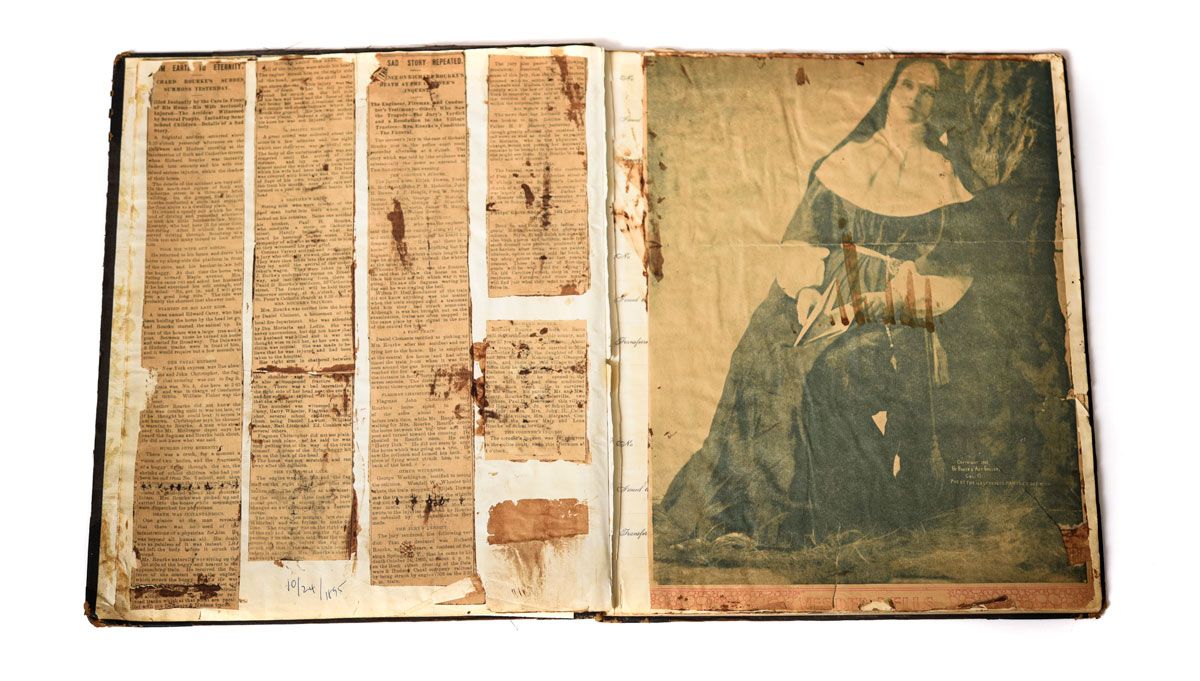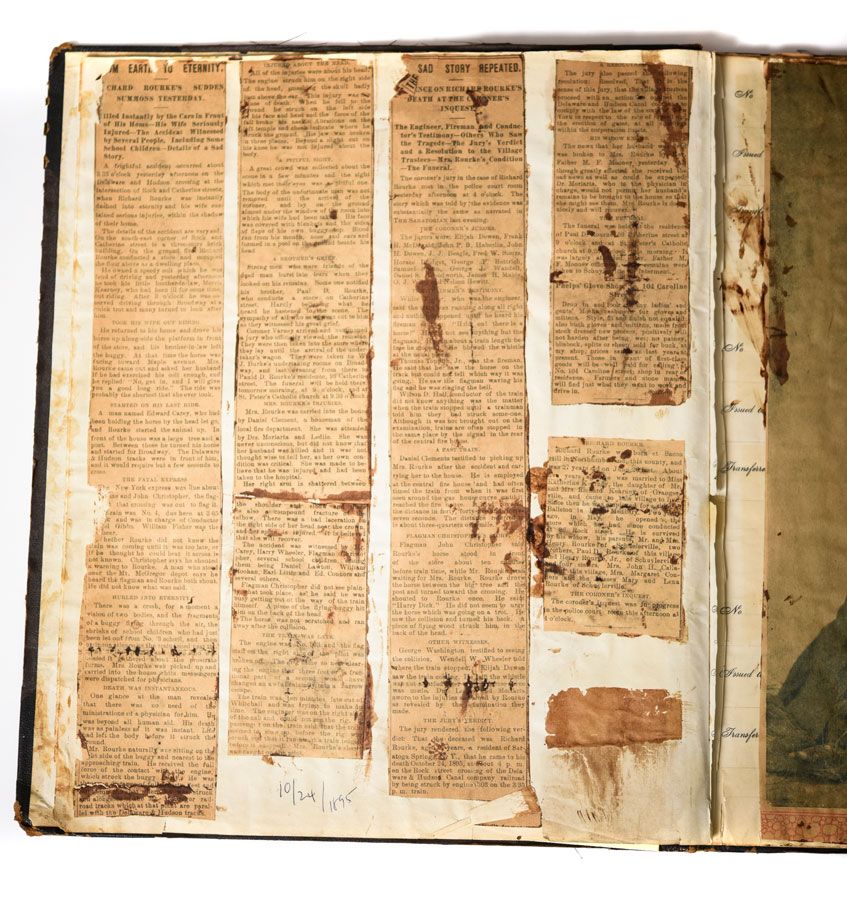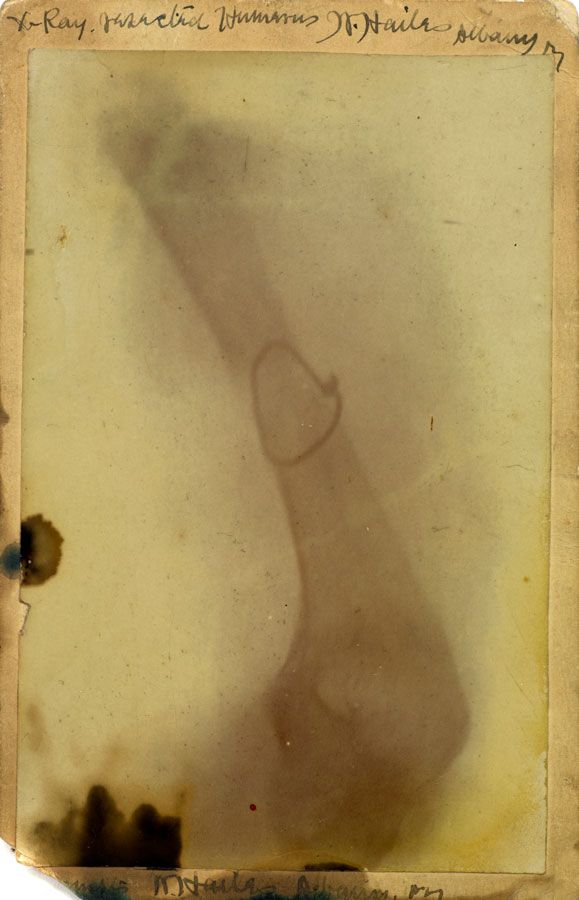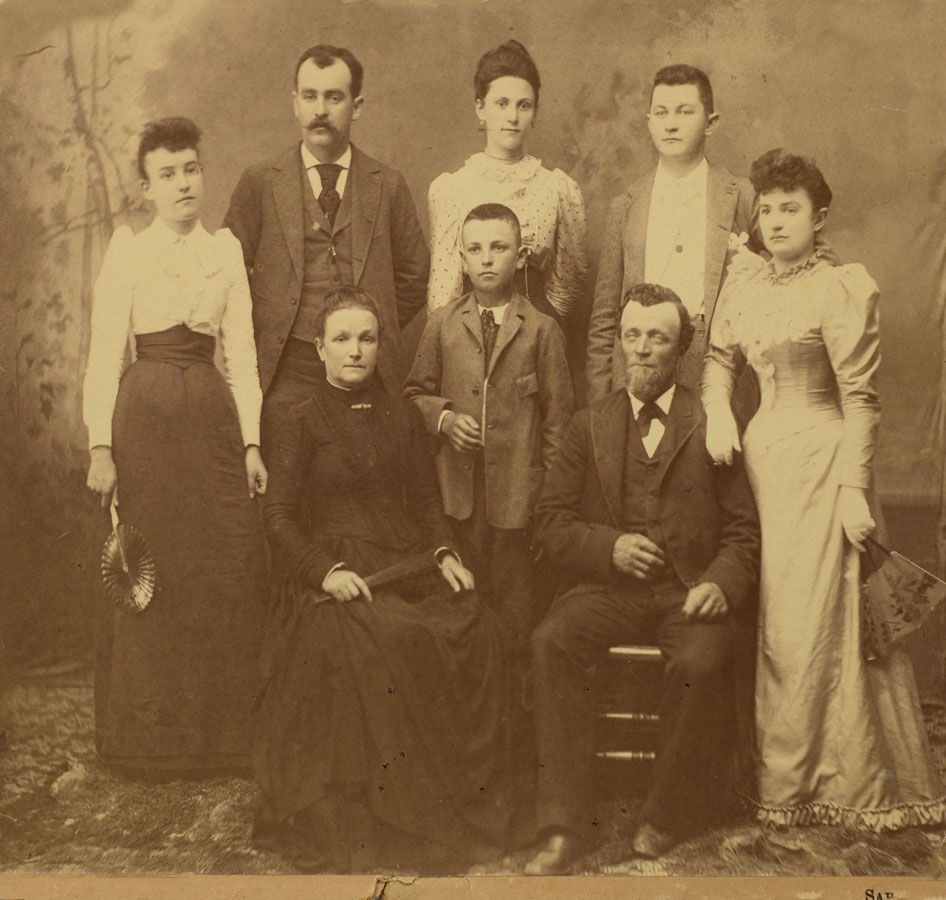
Written by Megin Potter
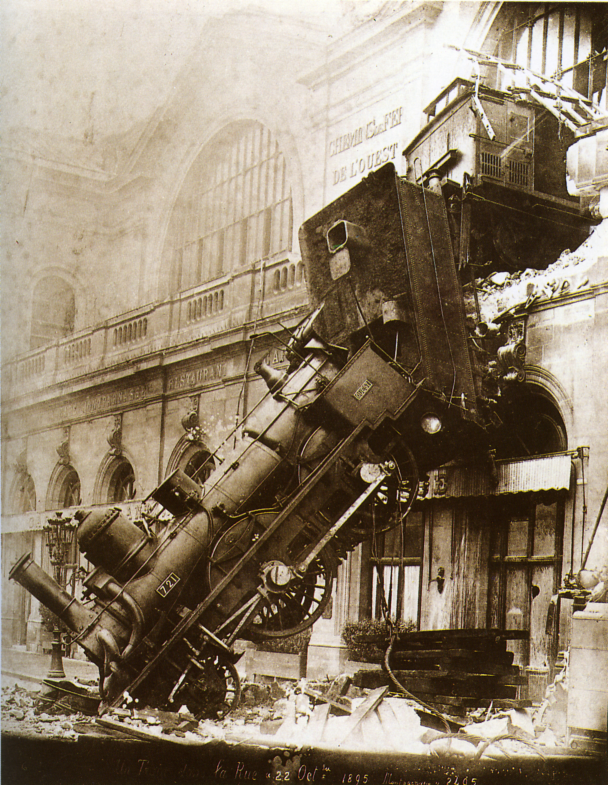
Around the base of the Christmas tree, a train chugs merrily along, reminding us of the glory days of railroading.
As it roared through towns that had recently been reserved solely for horse and buggy traffic, the railroad brought the promise of prosperity.
Just like the miniature version you have at home today, when speed outran caution in the late 1800s, trains would fly off their tracks.
Just two days after one of the most famous train crashes in history, the Gare Montparnasse Derailment that sent a train careening through a wall in Paris, a lesser-known train crash occurred, right here in Saratoga Springs.
That Fateful Ride
It is still unknown whether Richard Rourke, 27, did not realize the Delaware & Hudson Canal Company train was charging toward him at 4 p.m. on that fateful Thursday afternoon of Oct. 24, 1895, or whether he was trying to outrun it.
The Schuylerville Standard later reprinted the incident as it originally appeared in The Saratogian newspaper. The article begins:
“A frightful accident occurred…at the intersection of Rock and Catherine streets, Saratoga Springs, when Richard Rourke was instantly dashed into eternity, and his wife sustained serious injuries within the shadow of their home.”
Richard and Catherine (Kearney) Rourke lived and operated a shop in a three-story brick building at the same intersection, not far from what is now known as the Olde Bryan Inn. After a day of riding, Richard returned home, dropping off his brother-in-law, Maurice Kearney, and fetching his wife. The Standard reports this conversation followed;
“Mrs. Rourke came out and asked her husband if he had exercised his colt enough, and he replied: ‘No, get in, and I will give you a good long ride.’”
Then added: “The ride was probably the shortest she ever took.”
Once the man holding their horse’s reins let go, it would have only taken a few seconds for the couple’s coach to cross the tracks, and there was a flagman shouting out a warning to Rourke that a train was coming, the paper reported.
When the train collided with their carriage, Richard received the full-force of Engine 303’s might. The impact and subsequent fall broke his neck. He also sustained injuries to his face, jaw, and knee.
The horse was uninjured and ran away. Catherine broke her arm in two places, injured her spine, and received a deep cut on her head. She was carried home and not informed of her husband’s death until shortly before his funeral on Saturday at St. Peter’s Catholic Church.
The incident prompted the village to compel D & H Railroad to maintain state speed limits and to install crossing gates.
The Disappearance of the Railroads
When he was a boy, John O’Connor didn’t know about his “Aunt Kittie’s” tragic past, or why she walked with a limp. These details he found out later when he became the family’s unofficial historian.
“It’s just in my nature to be curious about these things,” said John, who worked in publishing for much of his life.
John remembers how, until the 1940s, he’d cross those same railroad tracks when taking walks with his father from their home near High Rock Park to Woodlawn Avenue.
“The train actually dominated the city at that time,” said John. “There were these long freight trains and it was difficult to go across town. We’d go up to Congress Street to cross because that was the safe way to go,” he added about the train overpass they used to drive under when travelling back and forth from the east and west sides of the city.
Seven years after the crash, Catherine, then 40, remarried. At the time, her husband, Wesley Devillo Allen, was 11 years her junior, and was among the first generation to work as a janitor at the Adirondack Trust Company. He died seven years later, in 1914, at which time Catherine went to live with her sister, Sarah, and her two children (John’s grandmother, father, and uncle) just steps away from where the accident had occurred.
Catherine worked at the Walworth Mansion and witnessed how, by the 1950s, Saratoga’s switch from coal to oil for heating and to trucks for shipping, precipitated the decline of the railroads. She died in 1957.
An Odd Coincidence…
While researching his family’s history, John O’Connor discovered an unusual, and almost eerie coincidence.
On December 1, 1923, another distant relative, who also lived on Rock Street, William Davis, 70, was struck and killed by a Delaware and Hudson locomotive while walking across Broadway.
